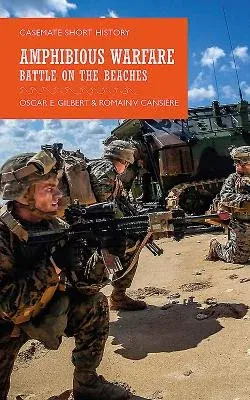One of the most difficult types of warfare to master, landing on a
hostile beach requires scrupulous planning and intense coordination
between the forces in the air, sea and land.
With a history reaching back to the Persians landing on the Greek shores
at the Battle of Marathon in 490 BC, it was the First World War that
marked the beginning of modern amphibious warfare, with the Royal
Marines combining their efforts with the Royal Navy. Despite the
disastrous Gallipoli amphibious operation to seize the Dardanelles
Straits in 1915, the Royal Navy and US Marine Corps continued to develop
new landing crafts throughout the inter-war years. The Second World War
proved more successful for amphibious warfare, with the Japanese
invasion of the Philippines in 1941 crushing the American forces who
were defending the Pacific islands and the D-day landings by the Allied
troops in 1944 initiating the beginning of the end of the war in Europe.
This accessible short history looks at the historical development of
amphibious warfare, telling the stories of particular landings, and the
units that have taken part in this unique type of warfare. The Royal
Marines and US Marine Corps continue to evolve and play a crucial role
in defense today, with specialized amphibious warfare ships being
deployed to enable elite forces to respond promptly to threats across
the globe.

